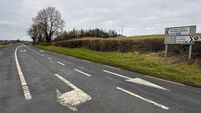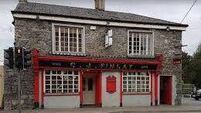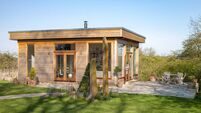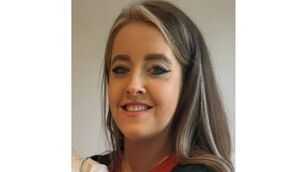Kildare historian unearths nuggets about 'Big Houses'
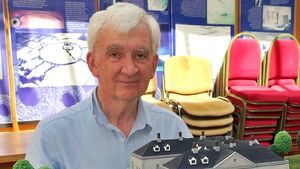
Michael O'Connell and his model of Castlemartin House
"I'M not an expert in local history, I'm actually a Johnny come lately to it," says retired GP Michael O'Connell recently at a Heritage Week talk. "But I'm curious."
Though not an expert, he proceeds to tell things about local big houses and their landed estates histories that many in his audience haven't heard before.
Born and reared in Kilcullen, and a doctor in Newbridge for many decades, Michael O'Connell gave talks in Kilcullen during National Heritage Week about the local Castlemartin and New Abbey estates, and how they developed from Norman times to the present day.
He also spent afternoons of the week in Kilcullen Heritage Centre guiding visitors through displays of several models he has built, illustrating both the recorded facts and some of his own theories and discoveries about those and other places of local interest.
"It's a bit like being an amateur detective," he told those who came along to hear him in the Town Hall Theatre that adjoins the Heritage Centre.
"There's nothing I like better than poring over old documents, trying to find as many 'dots' as I can, and then joining them in a plausible manner."
In the case of Castlemartin, those 'dots' span more than a thousand years, with indications that the first castle on the site was constructed in the late 1100s. For his Kilcullen audience, he plotted the lines joining those dots all the way through a newer castle being converted to a manor house, and subsequently the building of the current Castlemartin House there.
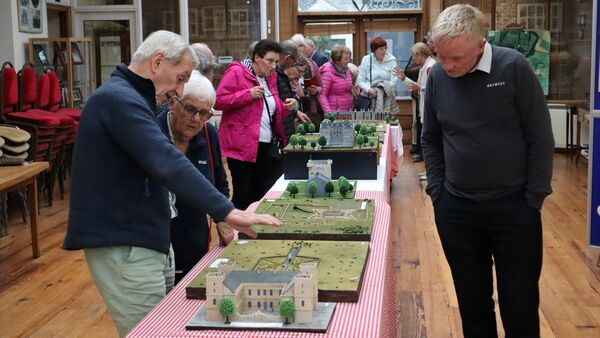
He delineated the ownerships of the property all the way from the FitzEustace Le Poer family who lived there for some 500 years, through Thomas Harrison MP who built the current house, the Blackers who bought the estate in the mid-1800s, to Tony O'Reilly who bought it in 1972 and revived and restored the house and lands during some 42 years before it was sold to the current owner, John Malone, in 2015.
Among the fascinating details Michael O'Connell revealed was that there is still part of the original Norman tower house building incorporated under the hall area of the current house.
His models of the estate buildings during different early points in that thousand years are to a degree speculative, but based much more on contemporary realities than on fancy.
Even a tiny drawing he noticed in a very old map of the Kilcullen area gave him the idea that a tower house on the lands had been given an addition to make it a more comfortable manor house.
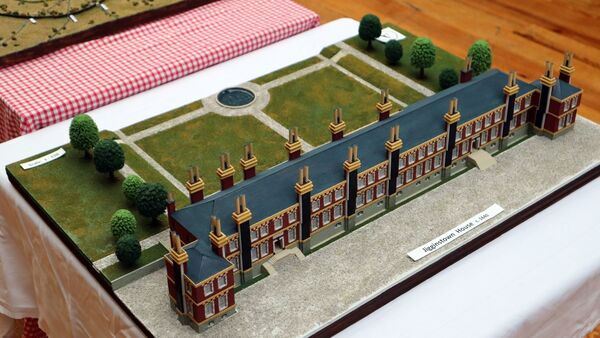
He used detail in old paintings of the present house to show architectural changes that were made by successive early owners.
Through the week he provided similar nuggets to be seen in his various models — each of which represents at least three months of work to build.
For instance, about the former Harristown Castle near Brannockstown, he read an account of the owner having a full-size Man O'War sailing ship on an artificial waterway in his formal gardens, in which he would entertain guests with servants dressed in sailor and pirate costume. The model has a miniature sailing ship to illustrate this.
His model of Jigginstown House in Naas, now a ruin apart from the vaulted basement, is another that Michael says is 'conceptual', but based on a small piece of drawing made by an architect who visited the building when it existed.
On the New Abbey model he has built a mill-house which was just a small detail in the distance in a contemporaneous drawing of another part of that original friary community.
During both the talks and the informal discussions around the models over the week, lots of information was exchanged. Those who came learned. So too did Michael O'Connell, because history is a fragmented thing, a jig-saw puzzle of a past that by its nature is never known completely.
He is also not a professional historian which makes the results from the curiosity of the 'amateur detective' non-experts all the more compelling.
